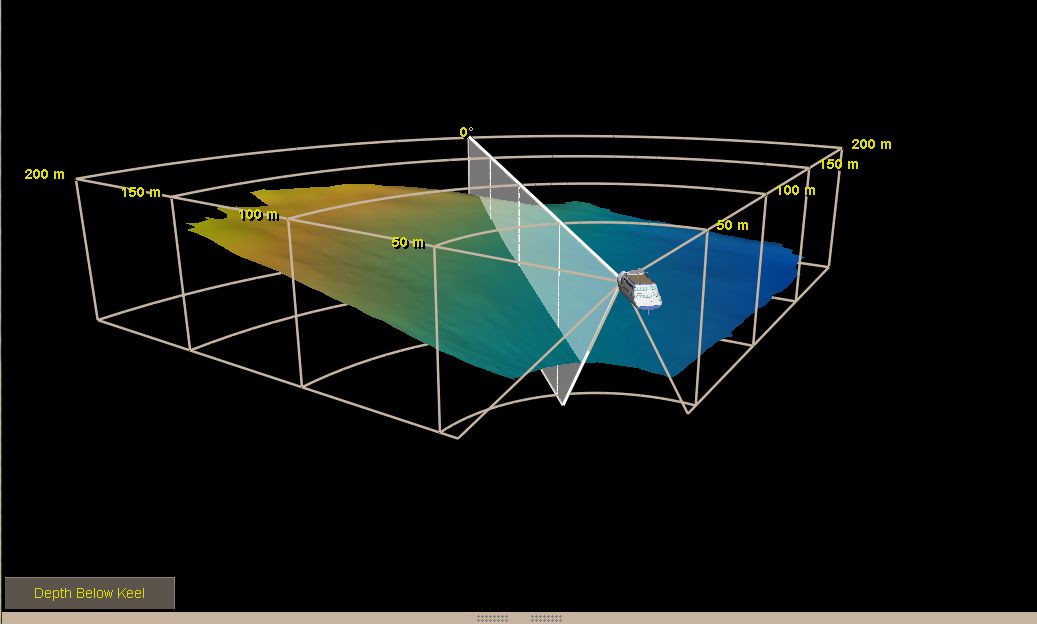Installing a navigation sonar, either on a new build or during the refit, is a straightforward process. Take FarSounder’s method for example – a fixed fairing installation with no moving parts. The sensor can be installed and removed by a diver once the fairing is in place, and the Power Module can be installed in any clean, dry location within 33 m of the Transducer Module. The fitting is designed to suit a wide variety of yachts in all different stages of life.
However, just because something is straightforward doesn’t mean it is widely understood. Many vessels may get to the refit stage and incorrectly believe that installing a new 3D Forward Looking Sonar system would take much more time and effort than it really does. With that in mind, we bring you the reality of the operation, so you can decide for yourself. Let’s analyse the key FAQs:
 Whereabouts should you install the Transducer Module?
Whereabouts should you install the Transducer Module?
The Transducer Module needs to be installed as far forward and as deep as possible on the ship’s hull. This is simply because the deeper this module is installed, the better the performance will be in higher sea states.
It is recommended that the top of the Transducer Module be installed one metre or more below the water surface, and it can either be mounted on the centre line of the vessel or offset from the stem.
The key thing to note about its location is there should be a minimum angular clearance from the edge of the array face. This will ensure that the signals are not blocked by the vessel itself. When mounted to the side of the stem, it is very important to make sure that the bow does not block the Transducer Module’s field-of-view.
In addition, any fixtures, ie. lights or cameras, should be installed below the transducer not above. Once the design in place, users are encouraged to send their drawings to the FarSounder Engineering team for review.
Which way should the Transducer Module be installed?
The Transducer Module should be oriented with the urethane array face pointing forward. It is highly recommended that the Transducer Module be installed in a level orientation.
For yachts which are designed to “sit” at different trim angles at different speeds, it may best to install the Transducer Module so that it faces directly ahead when the vessel is at the steady trim angle most commonly experienced to ensure optimal coverage. FarSounder’s Engineering team advises that the user can also choose to install the Transducer Module somewhere between the vessel’s two extreme trim orientations.
Both the FarSounder-500 and the FarSounder-1000 are capable of compensating up to +/-20 degrees roll and pitch from the level orientation of the Transducer Module. But, in order to make the most of this, any inclination of the Transducer Module needs to be minimised.
Luckily, for both the FarSounder-500 and the FarSounder-1000, achieving this correct orientation is made very easy. The array faces are marked to ensure it is clear which way up they should be. In the case of the FarSounder-500, the 12 o’clock position is marked on the front of the module with a small round protrusion, and on the back of the unit by the connector. The FarSounder-1000 Transducer Module is even simpler; the words “THIS SIDE UP” show the correct way to position it.

How is the Transducer Module attached to the vessel?
The module’s array face needs to be in the water, facing forward, in order for the system to function properly. The array face can be recognised by its encasement in black urethane. Just behind the array face there is a metal collar that is used to mount the module to the vessel.
Users should heed warning to avoid putting caulking (such as Sikaflex) around the Transducer Module. This is crucial so that water is able to flow through the small slits/gaps in the installation collar, helping with the system cooling.
An important thing to keep in mind here is that there should be a small clearance gap at the top and bottom to facilitate installation, removal, and flooding.

Where should the Power Module be installed onboard?
The Power Module is supplied in a NEMA style bulkhead mounted enclosure. It can be installed in any clean, dry location within 33 m of the Transducer Module, and this doesn’t even need to be somewhere you have convenient access to; there are no user interface components on the Power Module other than the power switch. Furthermore, for installation in inaccessible locations, the power input can be put on a circuit breaker line with the switch in a convenient location.
 What is the user interface, and how does the Power Module connect to it?
What is the user interface, and how does the Power Module connect to it?
FarSounder’s user interface is a computer software package called SonaSoft™, designed to run on Windows 7 Professional x64 (US Edition).
There are multiple ways to connect, but all are simple. When connecting the Power Module directly to the user interface computer, an Ethernet cross-over cable should be used. If the Power Module is going to connect to a network switch before connecting to the user interface computer, a standard straight through cable can be used.
However, potential buyers should bear in mind, it is not recommended that the Power Module share a network switch with other high-bandwidth network devices.
And that’s about it…
Hopefully this has provided some guidance as to whether or not a new sonar should be included in the plan for your yacht refit. It may give those interested further comfort to know the company’s Installation Design Checklist is only one-page long. Additionally, the installation images displayed here give some insight as to how the system fits onto different kinds of yachts. The choice is yours.
Want to hear more from Superyacht Technology News? Subscribe to our magazine free!

